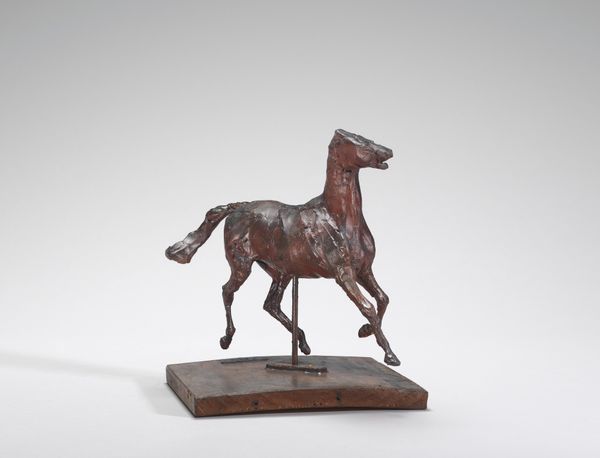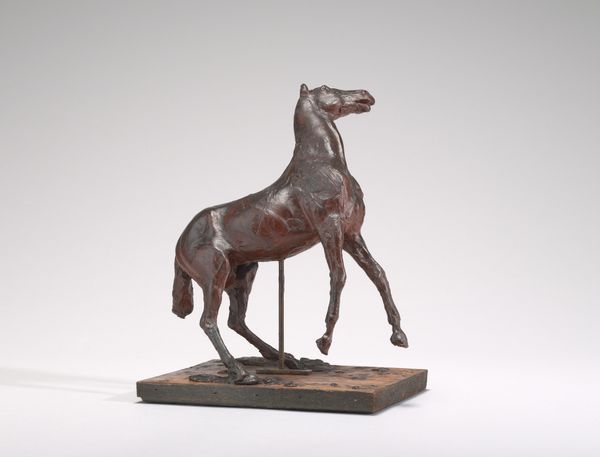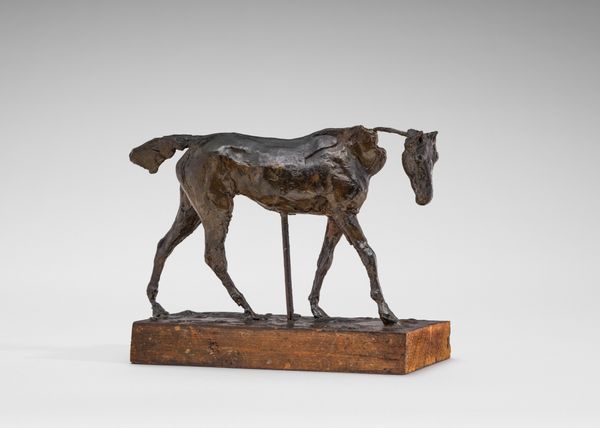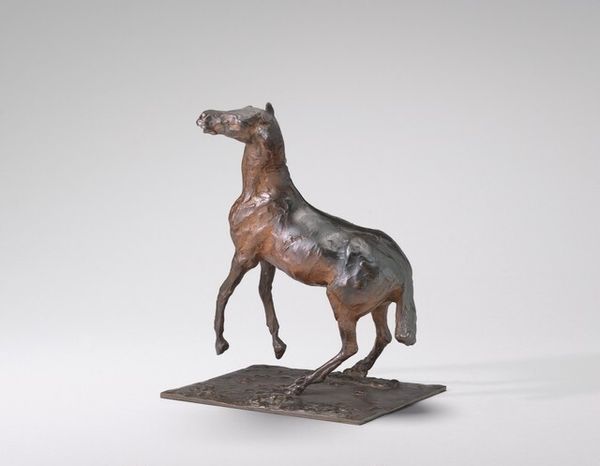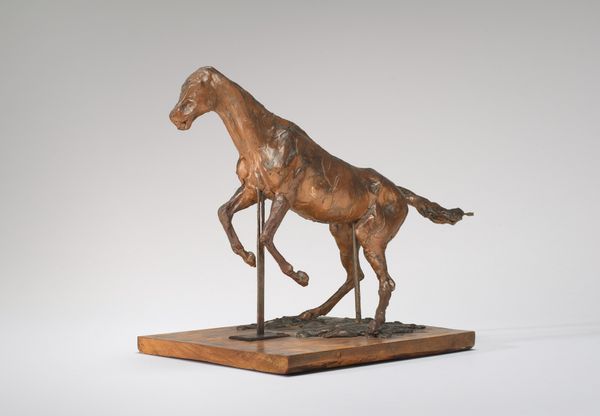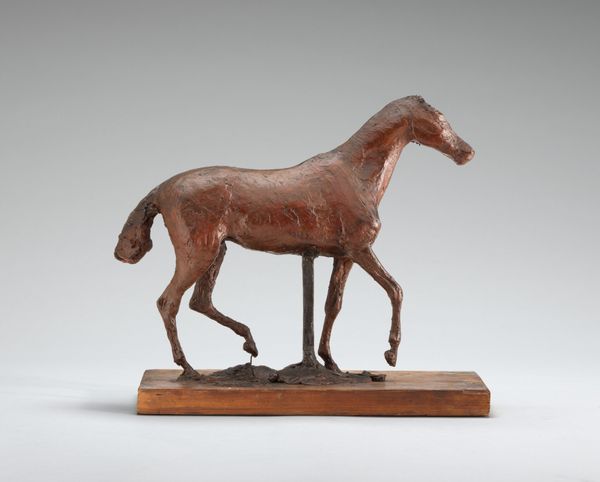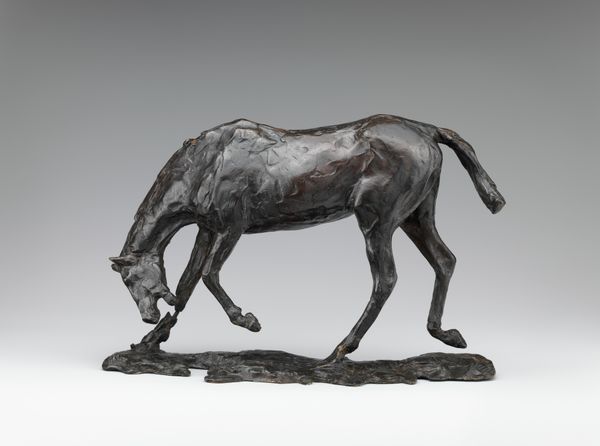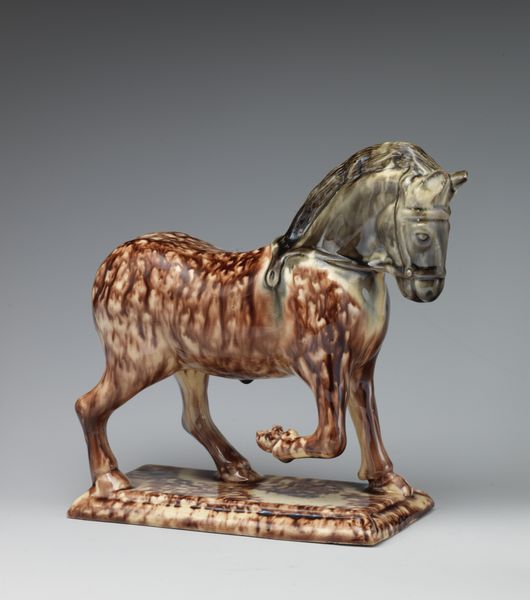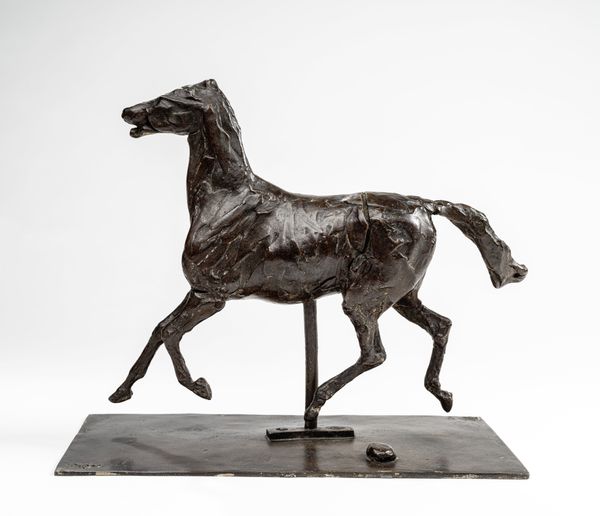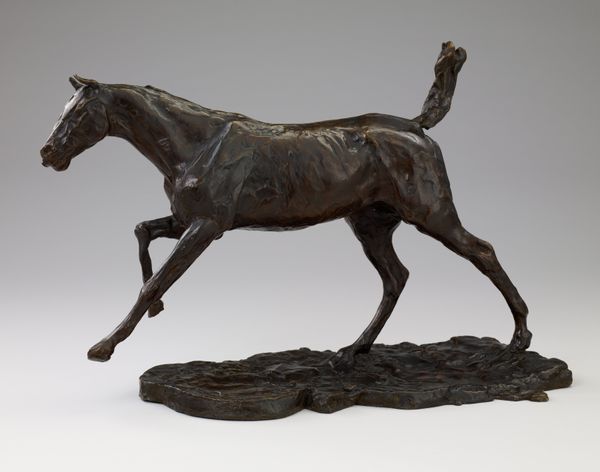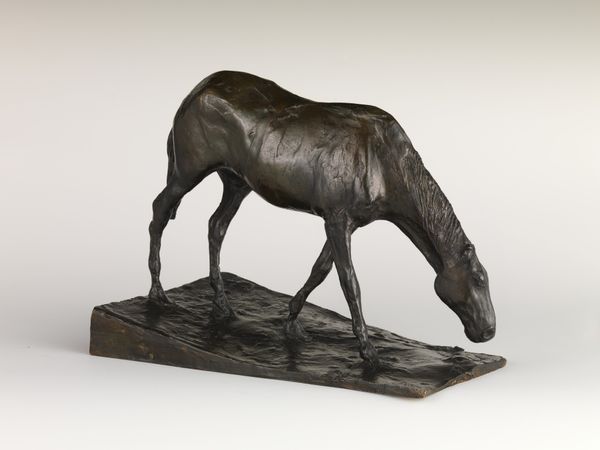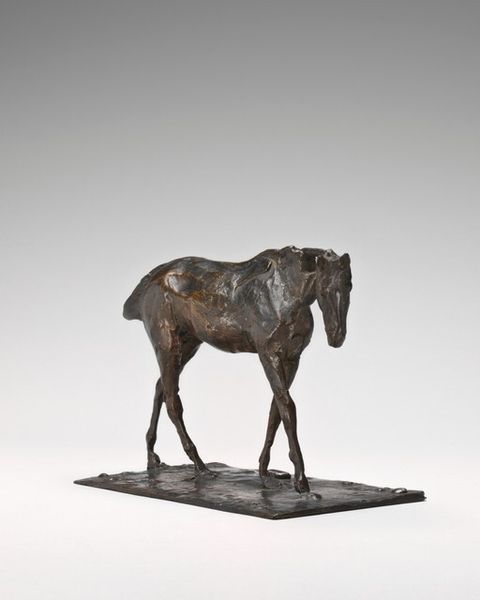
bronze, sculpture
#
animal
#
impressionism
#
sculpture
#
bronze
#
charcoal drawing
#
figuration
#
sculpture
Dimensions: overall without base: 21.8 x 11.4 x 30.9 cm (8 9/16 x 4 1/2 x 12 3/16 in.) height without base (of horse): 21.1 cm (8 5/16 in.)
Copyright: National Gallery of Art: CC0 1.0
Edgar Degas created this bronze sculpture, "Study of a Mustang," sometime during his career as a means of exploring movement and form. Degas was a privileged member of the French upper class, and he found himself fascinated by the spectacle of horse racing. This sculpture of a mustang, a free-roaming horse of the American West, reflects an interest in capturing raw, untamed energy. During the 19th century, the mustang symbolized the American frontier. But for Degas, the horse was probably more of an exercise in representing motion than a statement about the West. One can imagine Degas thinking of the animal as he watched the ballet dancers he liked to paint. As he famously said, "Art is not what you see, but what you make others see." Ultimately, "Study of a Mustang" embodies Degas’s attempt to grasp and convey the fleeting beauty and power of the natural world, distilled through the lens of his own experiences and the cultural narratives of his time.
Comments
No comments
Be the first to comment and join the conversation on the ultimate creative platform.


